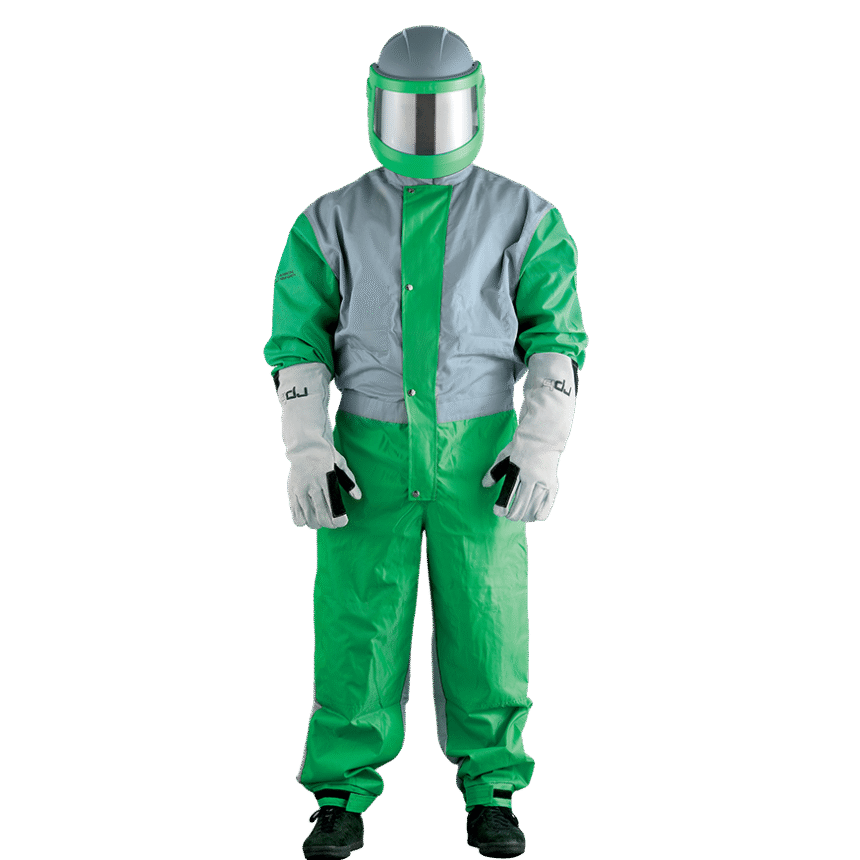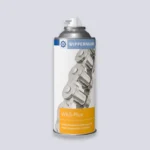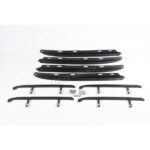Introduction to Sandblasting and its Hazards
Sandblasting is a powerful technique that transforms surfaces, stripping away layers and revealing what lies beneath. Whether you’re involved in industrial work, car restoration, or artistic projects, this process can yield stunning results. However, with great power comes significant risks. Sandblasting creates dust clouds filled with abrasive materials that pose serious health hazards if proper precautions aren’t taken.
Enter the sandblasting suit—a crucial piece of safety gear designed to protect you while ensuring comfort during intense work sessions. Choosing the right sandblasting suit can be the difference between a seamless day on the job and potential injury or discomfort that could sideline your efforts. Let’s explore what makes an exceptional sandblasting suit stand out in terms of both safety and comfort!
The Importance of a Quality Sandblasting Suit
A quality sandblasting suit is essential for anyone in the industry. It acts as the first line of defense against harmful abrasives and toxic particles.
Without proper protection, workers expose themselves to serious health risks, including respiratory illnesses and skin damage. A well-constructed suit minimizes these dangers significantly.
Moreover, not all suits are created equal. Investing in high-quality materials ensures durability and resistance to wear over time. This longevity translates into cost-effectiveness in the long run.
Comfort shouldn’t be overlooked either. A poorly fitting suit can hinder movement and affect productivity on the job site.
When you prioritize a quality sandblasting suit, you’re choosing safety without sacrificing comfort or mobility. This balance allows professionals to focus on their work rather than worrying about personal safety challenges.
Factors to Consider When Choosing a Sandblasting Suit
When selecting a sandblasting suit, several factors come into play. First and foremost, material matters. Look for durable fabrics that can withstand abrasives without compromising comfort.
Next is fit. A snug yet flexible design allows for ease of movement while providing adequate protection from flying debris. Consider suits with adjustable features to ensure the best fit.
Ventilation is another crucial aspect. Proper airflow helps regulate body temperature during long hours of work, preventing overheating and discomfort.
Don’t overlook visibility either. Clear visors or goggles enhance sightlines and safety, helping you focus on your task without distractions.
Check for certifications ensuring the suit meets industry safety standards. A well-chosen sandblasting suit shouldn’t just protect you; it should also support your performance on the job site.
Comfort Features of the Ultimate Sandblasting Suit
When it comes to a sandblasting suit, comfort is key for long hours of work. The ultimate suit features breathable materials that allow for airflow while still protecting you from abrasive particles.
Adjustable straps and elastic cuffs ensure a snug fit without being restrictive. This allows you to move freely, whether you’re bending or stretching during your tasks.
Many suits come with moisture-wicking linings that help keep sweat at bay. Staying dry enhances focus and productivity, especially on hot days.
Padded areas around the knees and elbows add an extra layer of comfort, reducing strain during repetitive movements.
Additionally, lightweight fabric makes it easier to wear throughout the day without feeling weighed down. These thoughtful design elements create an experience where protection doesn’t compromise mobility or ease of movement in demanding environments.
Safety Features of the Ultimate Sandblasting Suit
When it comes to sandblasting, safety is non-negotiable. The ultimate sandblasting suit incorporates multiple protective features to shield workers from hazardous materials and conditions.
Durable fabric resists the abrasive nature of blasting materials. This ensures that even during intense operations, the suit remains intact and functional. Reinforced seams add an extra layer of protection against wear and tear over time.
A crucial aspect is proper ventilation. Many top suits come equipped with breathable fabrics or built-in ventilation systems, reducing heat build-up while keeping dust at bay.
Visibility matters too; reflective strips enhance visibility in low-light environments, promoting safer working conditions. Additionally, hoods often include face shields designed to protect against flying debris without obstructing vision.
Each feature works together seamlessly to create a reliable barrier between you and potential hazards on the job site.
Real-Life Testimonials from Professional Sandblasters
Many professional sandblasters emphasize the importance of a reliable suit. A seasoned operator shared, “I used to ignore how much comfort matters until I tried a quality sandblasting suit. The difference was night and day.”
Another expert recalled an intense project where their suit made all the difference. “I was in that booth for hours. Without my comfortable suit, I would have struggled to focus,” they noted.
Safety is often intertwined with comfort in these testimonials. One worker stated, “The protective features gave me peace of mind while working on challenging surfaces.”
These insights illustrate that professionals understand the direct link between safety gear and performance efficiency. Many agree: investing in a top-notch sandblasting suit isn’t just about protection; it’s about enhancing productivity too.
fConclusion: Investing in Your Health and Comfort as a Sandblaster
Choosing the right sandblasting suit is more than just a purchase; it’s an investment in your health and comfort. Every day spent in hazardous conditions can take its toll, both physically and mentally.
Quality gear shields you from harmful materials while enhancing your work experience. A well-designed sandblasting suit allows for flexibility and ease of movement, enabling you to perform tasks efficiently without feeling restricted.
Moreover, comfort translates directly into productivity. When you’re comfortable, you focus better on the job at hand rather than on discomfort or irritation caused by subpar equipment.
Your safety shouldn’t be an afterthought—it should be a priority. Investing in a top-notch sandblasting suit pays dividends in performance and peace of mind as you tackle challenging projects with confidence.
FAQs
When it comes to sandblasting, safety should always be a top priority. But that doesn’t mean you have to sacrifice comfort for protection. A high-quality sandblasting suit strikes the perfect balance between keeping you safe from hazardous materials and ensuring you can work efficiently without feeling restricted.
Investing in an ultimate sandblasting suit is about more than just gear; it’s about your well-being on the job site. By understanding its vital features—both comfort and safety—you empower yourself as a professional.
FAQs
What materials are typically used in a sandblasting suit?
Most sandblasting suits are made from durable materials such as nylon or special fabrics designed to resist abrasions and protect against chemicals.
How do I know what size sandblasting suit to buy?
It’s essential to refer to the manufacturer’s sizing chart for guidance. Ensure measurements include chest, waist, and inseam for proper fit.
Can I wear regular clothing under my sandblasting suit?
Yes, wearing breathable layers underneath is recommended for added comfort while providing an extra layer of protection against harsh conditions.
How often should I replace my sandblasting suit?
The lifespan of a sandblasting suit depends on usage frequency and exposure levels. Regularly inspect it for signs of wear or damage, replacing it if necessary.
Are there any specific cleaning instructions for maintaining my sandblasting suit?
Generally, it’s best practice to follow the manufacturer’s guidelines regarding washing methods and detergents. Proper care extends your suit’s life significantly.
Is there a difference between industrial-grade suits and DIY models?
Yes! Industrial-grade suits usually offer enhanced durability, better ventilation systems, and superior protection compared to standard DIY options designed primarily for light use.






